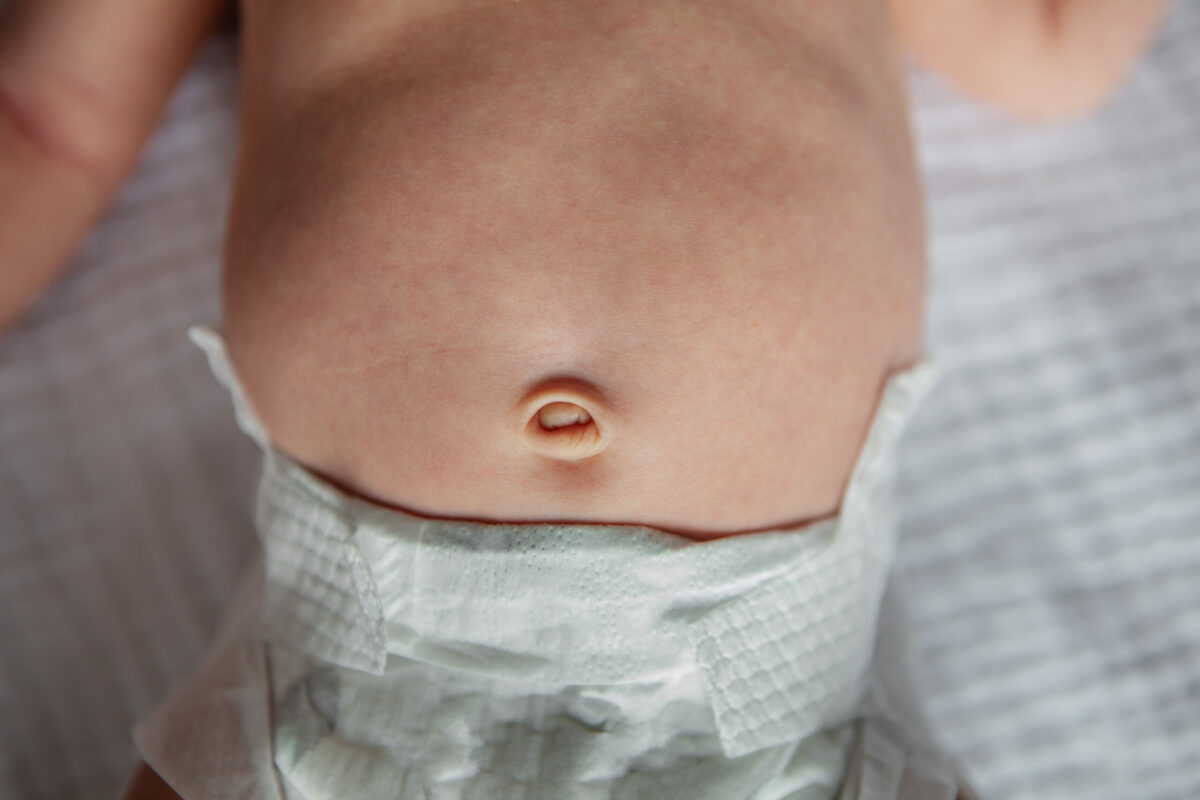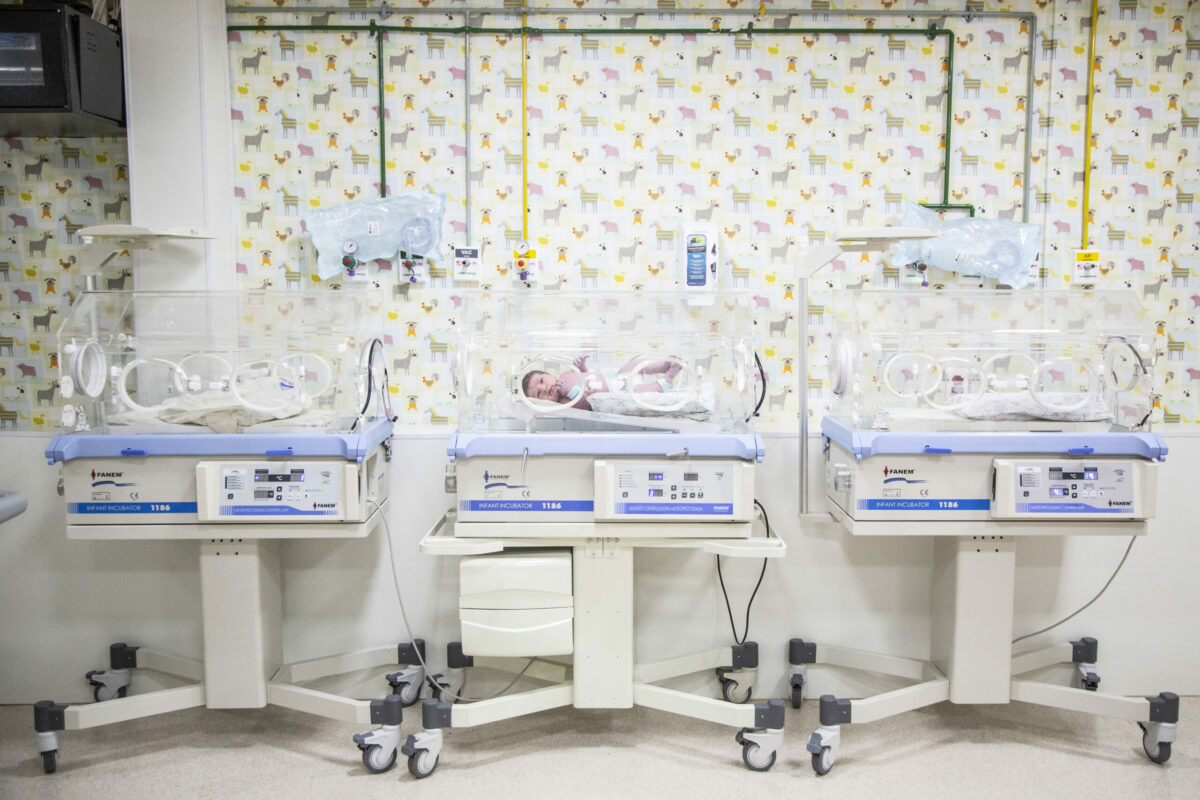A rare health condition that happens in babies before birth (during pregnancy) and causes the diaphragm to remain open is called congenital diaphragmatic hernia (CDH). The muscle that separates the abdomen from the chest is called the diaphragm. As a result, CDH leaves a hole (a hernia) in the diaphragm.
The hernia caused by CDH makes an opening between the chest and abdomen (belly), which allows certain organs (including the stomach, liver, and others) to move through the hernia into the chest of the baby. As a result, intestines do not develop normal connections to stay in the abdomen (malrotation) because they are in the chest. Furthermore, bowels may also twist in themselves and interrupt blood supply (volvulus).
Additionally, along with intestinal problems, the lungs also do not develop properly. The alveoli (small air sacs) in the lungs also do not develop causing problems with blood pressure and flow inside the lungs. If an unborn baby develops pulmonary hypertension, it may become hard to breathe after birth. Sometimes, CDH causes heart problems in babies after birth.
However, treatments for babies with CDH are different because it depends on the severity and time when the condition is diagnosed.
Symptoms
The symptoms that happen due to congenital diaphragmatic hernia range from mild to severe. Check below some symptoms:
- Pulmonary hypoplasia (severe breathing problems caused by small lungs)
- High blood pressure in the lungs (also known as pulmonary hypertension) may negatively affect the heart and lung arteries
- Heart problems
- Damage to the stomach, liver, intestines, and other organs that move into the chest
Generally, this condition can be found with an ultrasound during pregnancy. Discuss with your healthcare professional if you suspect your child develops CDH.
Causes
The cause of most diagnosed CDH is unknown. However, in some cases, this congenital disease is linked to genetic disorders or random gene mutations.
What Are The Potential Complications of Congenital Diaphragmatic Hernia?
Babies with this congenital disease also may experience some complications, especially without treatment. For example:
- Heart disease
- Frequent or recurrent infections
- Problems with certain organs including the lungs, stomach, intestines, liver, and others
- Hearing loss (deafness)
- Gastroesophageal reflux
- Growth and weight gain issues
- Developmental delays
Diagnosis
In most cases, CDH is found during routine fetal ultrasound examinations during pregnancy. This test uses sound waves to make detailed pictures of the baby as well as the uterus.
Sometimes, the condition may not be found until after birth, or CDH can be diagnosed later in childhood (rarely). It occurs because the condition does not cause any signs or symptoms such as intestinal or respiratory problems.
Generally, an ultrasound test is used to monitor the development and growth of an unborn baby.
Prenatal Ultrasound
This test is performed several times during pregnancy to confirm the pregnancy, to check the number and size of the baby or babies, and to monitor the growth and development of the baby’s organs. If physicians suspect your baby may have CDH, they may recommend ultrasound more frequently because this test can determine the severity or worsening of the CDH.
Other Tests
The following tests also can be used to determine the function and development of the unborn baby. For example:
- Fetal MRI (magnetic resonance imaging) – This test uses a magnetic field and radio waves to make detailed images of the organs and tissues of the unborn baby.
- Fetal echocardiogram – This test can show how the baby’s heart is beating and pumping blood.
- Genetic tests – These tests may identify genetic changes that lead to CDH.
Treatment
The treatment for CDH depends on the severity of the condition, overall health, and when it is identified.
Fetoscopic Endoluminal Tracheal Occlusion (FETO)
This is an emergency treatment for babies with severe CDH. It involves surgery during pregnancy to help the baby’s lungs grow as much as possible before delivery. However, the surgery is performed in two procedures. For example:
- First – It occurs in the last months of the pregnancy (the third trimester) in which surgeons will make a small incision in the uterus through the abdomen. Thereafter, they will insert an endoscope (a small tube with a camera on the end) in the trachea (windpipe) through the baby’s mouth then a balloon is inflated to keep the amniotic fluid in the lungs. This procedure expands the lungs and helps them develop.
- Second – The second part of this procedure is performed usually after 4-6 weeks to remove the balloon to allow the baby to take air after birth. However, if the delivery starts before the balloon is removed, doctors will perform an ex-utero intrapartum treatment (EXIT) procedure. Furthermore, the delivery occurs by C-section with placental support. Thus, the baby still gets oxygen from the placenta until the balloon is removed.
In addition, FETO is not an option for everyone and unfortunately, there is no guarantee about the surgery results. Discuss with your doctor for more details.
Care after Birth
When the baby is born, doctors will make a treatment plan that meets the infant’s needs. In most cases, newborns need a breathing tube and care in the newborn intensive care unit (NICU). However, babies born with life-threatening lung problems usually require extracorporeal membrane oxygenation (ECMO) also called extracorporeal life support (ECLS). This is a machinery that works with the baby’s heart and lungs to allow them to rest and heal.
Furthermore, most babies with CDH, need surgery to close the diaphragm hole. In addition, babies with CDH need treatment even after leaving the hospital. It usually includes feeding support, supplemental oxygen, and medicines (such as antihypertensives).
Frequently Asked Questions
Can a baby survive a diaphragmatic hernia?
Yes, in normal circumstances, they have surgery after birth that removes the diaphragm hole. However, in severe cases, some babies do not survive despite the hard tries of the doctors.
What is the survival rate for congenital diaphragmatic hernia?
Generally, the survival rate for babies with CDH is between 65% and 70%. However, it depends on the severity of the condition and the hospital where the condition is treated.
What are the primary symptoms of congenital diaphragmatic hernia?
These include:
- Hypoxemia
- Pulmonary hypertension
- Lung infections (such as pneumonia)
- Irregular chest movements
- Breathing issues
- Skin color changes
- Fast heart rate
- Abnormal chest development
If you suspect your child develops CDH, consult with your healthcare professional. If you have additional questions, ask your physician.




